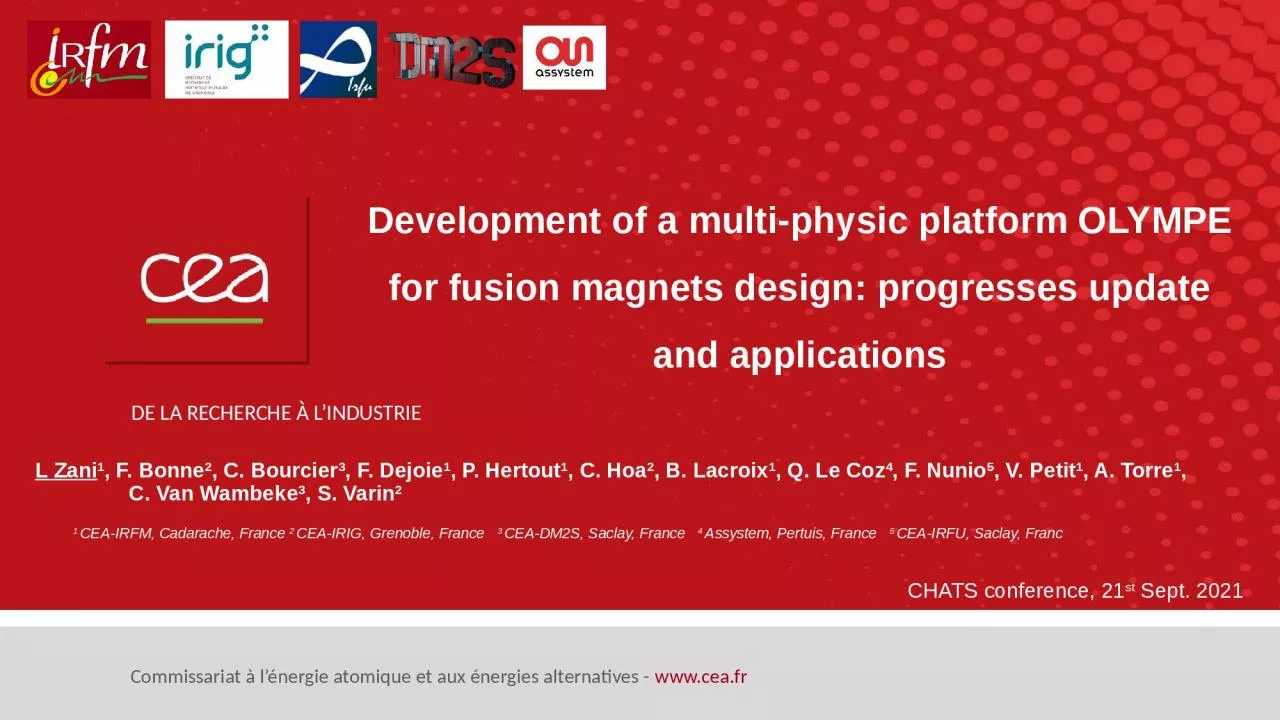PPT-Development of a multi-physic platform OLYMPE for
Author : eddey | Published Date : 2024-01-03
fusion magnets design progresses update and applications CHATS conference 21 st Sept 2021 L Zani 1 F Bonne 2 C Bourcier 3 F Dejoie 1 P Hertout 1
Presentation Embed Code
Download Presentation
Download Presentation The PPT/PDF document "Development of a multi-physic platform O..." is the property of its rightful owner. Permission is granted to download and print the materials on this website for personal, non-commercial use only, and to display it on your personal computer provided you do not modify the materials and that you retain all copyright notices contained in the materials. By downloading content from our website, you accept the terms of this agreement.
Development of a multi-physic platform OLYMPE for: Transcript
Download Rules Of Document
"Development of a multi-physic platform OLYMPE for"The content belongs to its owner. You may download and print it for personal use, without modification, and keep all copyright notices. By downloading, you agree to these terms.
Related Documents














